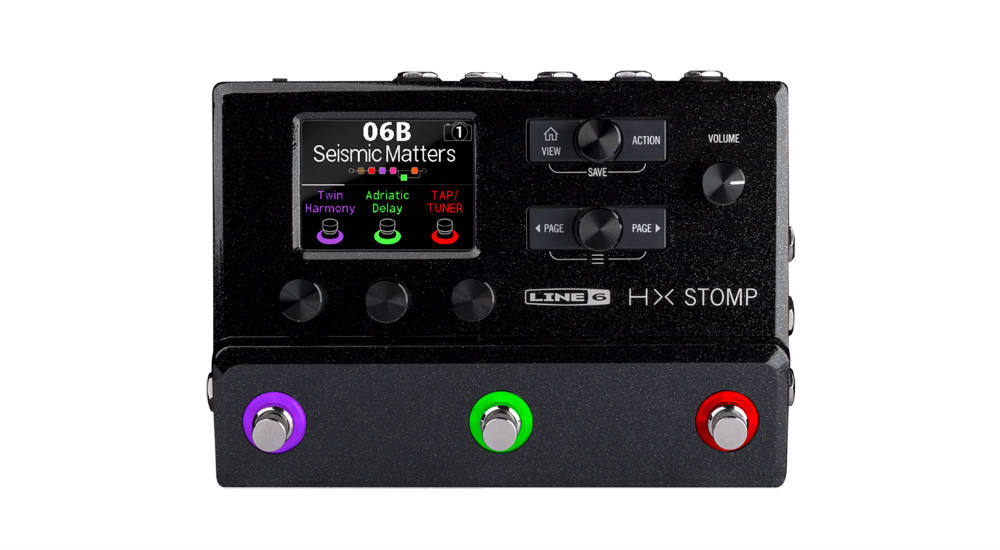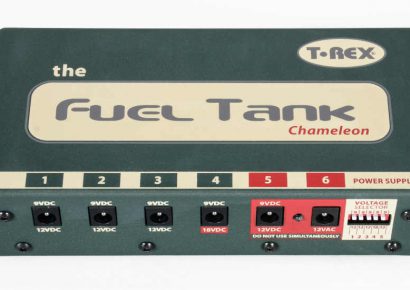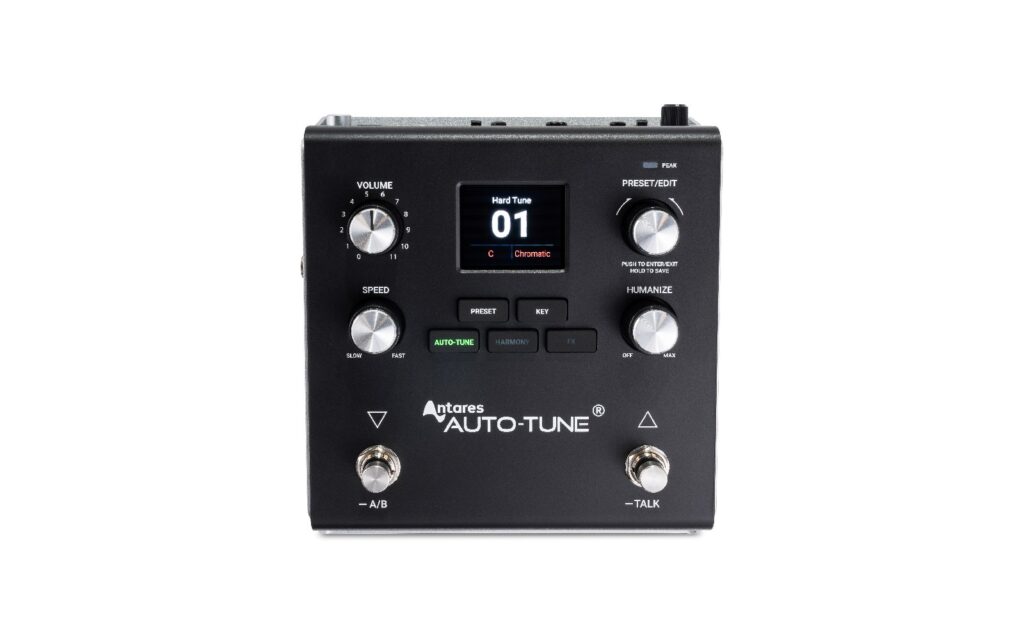The HX Stomp is a professional grade guitar effect and amp processor crammed into a glossy, sparkled housing about the size of a small HSP (depending where you go). Packed inside is the same DSP and HX modeling technology as found in the larger, pricier Helix itself. There are three pedal switching pots for toggling between effects, and five little pots for scrolling through presets and tweaking parameters. There are mono/stereo inputs and outputs, an expression pedal input, MIDI in/out and a stereo send with a mono/stereo return. The HX features over 300 amplifier and cabinet emulations and effects from the Helix range, as well as ‘legacy’ effects from their M-Series and stompboxes such as DL4, FM4 etc. The HX Stomp can double as a USB audio interface for recording, but only features a headphone out for this purpose. The HX includes an admittedly clunky power supply, but the website suggests the unit can be alternately powered via pedal power options. The unit also features a handy master output, to ensure wherever your output is heading, it’s receiving a healthy signal regardless of whatever monstrous crunch and distortion you’ve crammed into the presets.
Opening the box reveals a pedal that feels solid, weighty and looks simple enough to use. I connected the unit using the mono output to my recording interface and powered it up. Alternatively, the HX can be connected via USB and used as the input device for your DAW. When powered on, the HX’s LCD screen is nicely backlit and quickly opens up to a very user-friendly interface for tweaking the existing patches or creating your own. Scrolling through the ‘FX’, I was hooked, but a little underwhelmed at the amp tones before I remembered that, as the name suggests, the HX Stomp is designed to be used as a stompbox before an amp, so the FX presets mostly don’t contain amp simulations. Regardless, the delays are spacious and inspiring, and the modulation presets are fun and aptly named. Because of the HX’s ability to send and return auxiliary effects, you can create patches with mix blends, sends to delays that retain tails of reverbs or delays before they’re modulated, or vice versa. This can be especially helpful when you’re recording, because you can get a polished, finished sound while you record. The mix is easier because the sounds are finished, and the performance is better because the sounds are inspiring.
Finally reaching the ‘DIR’ (direct) tones, I was floored. Every amp model preset is usable, true to their namesake and honest in the sense that they’re not inherently treated and ‘perfect’ tones. The amp’s hum, sizzle and squeaks are modeled too. It’s also important to remember that, like competitors Kemper and Fractal Audio, these units will never sound like a real amp in a room (though maybe the HX Stomp could take the cake through a powered cabinet or amp). Instead, they’re designed to produce tones identical to a mic’d up amp. In addition to tweaking on the unit itself, Line 6 has specially designed HX Edit software that, when linked via USB, can be used to tweak settings on your computer (editing is mirrored on the HX itself; you don’t need to tweak and then download your tones). Not only can you tweak your own tones and scroll through the library of effects and amps, but you can download other users’ tones on the Custom Tone exchange, all for free.
I reviewed another Line 6 product in July’s issue and had the same problems navigating the Line 6 websites for drivers and software. Eventually I located the HX Edit download, but not without watching tutorials on external sites from people who have faced the same issues. After a few YouTube tutorials, Line 6 forums, Line 6 support etc., I located some instructional videos and managed to download my patches and upload them to the Customer Tone forum, so I can use them again when I inevitably buy a HX Stomp of my own. Because the pots on the Stomp are very sensitive, I found myself toggling tap tempo and switching presets while scrolling through settings. The HX Edit solves this. The HX Edit software is a much friendlier interface than the LCD screen on the HX Stomp itself, and I could see myself using the software a lot to tweak tones while recording, jamming, or re-amping.
The HX Stomp is a great all-round introduction to amplifier modeling at a great price. Don’t be fooled by its size and appearance – the Stomp is every bit as powerful as its larger counterparts, and Line 6 haven’t skipped out on the quality of the effects and amplifier modeling either. It’s a professional grade piece of gear that can hold its own, but is portable enough to fit in your backpack. The HX can be used to add effects to an already great-sounding amplifier sound, or it can replace your entire rig of pedals, amps, cabinets and effects, all the while doing it with more routing options than most pedals and amps. From seasoned software tweakers to bedroom guitarists and bass players, the HX Stomp would be a great addition to anyone’s collection of gear.


